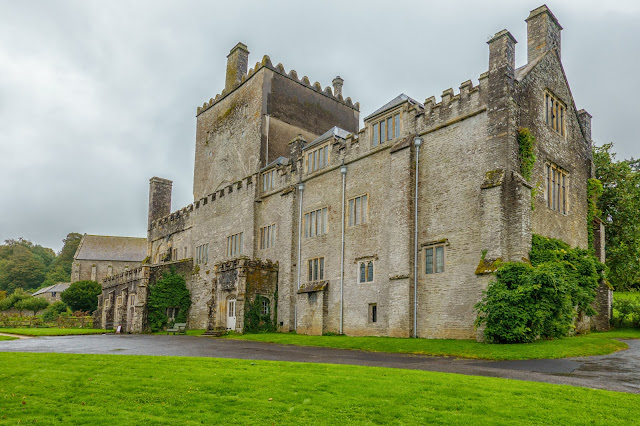Buckland Abbey - The home of Sir Frances Drake
Buckland Abbey is a Grade I listed 700-year-old house in Buckland Monachorum, near Yelvertn, Devon, noted for its connection with Sir Richard Grenville the Younger and Sir Francis Drake. It is owned by the National Trust.
It was founded as a Cistercian abbey in 1278] by Amicia, Countess of Devon and was a daughter house of Quarr Abbey, on the Isle of Wight. It was one of the last Cistercian houses founded in England and also the most westerly. The remains of the church are about 37.6 metres (123 ft) long. The width across the transepts is 28 metres (92 ft). The nave and presbytery is 10.1 metres (33 ft) wide.
The Exeter diocese episcopal registers show the abbey managed five granges at Buckland plus the home farm at the abbey. A market and fair at Buckland and Cullompton were granted in 1318. In 1337 King Edward III granted the monks a licence to crenellate - that is to build battlements on the walls.
In the 15th century the monks built a Tithe Barn which is 180 feet (55 m) long and survives to this day. It is Grade I listed
Buckland Abbey’s time as a monastery ended with the Dissolution of the Monasteries under the reign of King Henry VIII. The Buckland estate was sold to Sir Richard Grenville in 1541, though it seems that his son, Roger, was the one to live here.
However, Roger didn’t live to inherit Buckland as he died aboard the Mary Rose, which famously sank off Portsmouth in 1545.
Eventually it was Roger’s son, Sir Richard Grenville (The Younger), who inherited the estate from his grandfather when he was just 21. He set about modifying the Abbey, pulling down many of the monastery buildings and converting the body of the main church into a Tudor mansion home.
Sir Richard was also drawn to the sea, undertaking many early and exploratory voyages with the aim of colonising lands in North America.
The house was later sold to Sir Francis Drake – Elizabethan Hero, Sea Captain, Privateer and Slave Trader. He was the first Englishman to circumnavigate the globe and was able to purchase Buckland Abbey using a fraction of the treasure from the voyage. His later role in the defeat of the Spanish Armada in 1588 cemented his fame.
Drake was rarely at home during his ownership of Buckland Abbey. With thoughts always of the sea, his last voyage was in 1595. After plans to attack the Spanish again in Panama, a fever broke out aboard his ship and Drake died of dysentery in 1596. He had no children, so the ownership of Buckland Abbey passed to his brother, Thomas Drake.
Buckland remained in the ownership of the Drake family and their descendants until 1946. During this time, the family split their time between Buckland and other houses, principally Nutwell Court in Devon. In the 18th century, the agricultural improver William Marshall advised the family on farming improvements. In the early 19th century, the architect Samuel Pepys Cockerel was employed to remodel parts of the building and estate.
Buckland Abbey was acquired by the National Trust in 1946 at the instigation of Lady Astor. It was seen as a ‘National responsibility’ to save Buckland Abbey as ‘an important symbol of our heritage, the home of one of Plymouth’s famous sons, Sir Francis Drake.
Statue of Sir France Drake and picture of his ship The Golden Hind - the galleon captained by him in his circumnavigation of the world between 1577 and 1580. Both on display in the part of the house we looked at.








Comments